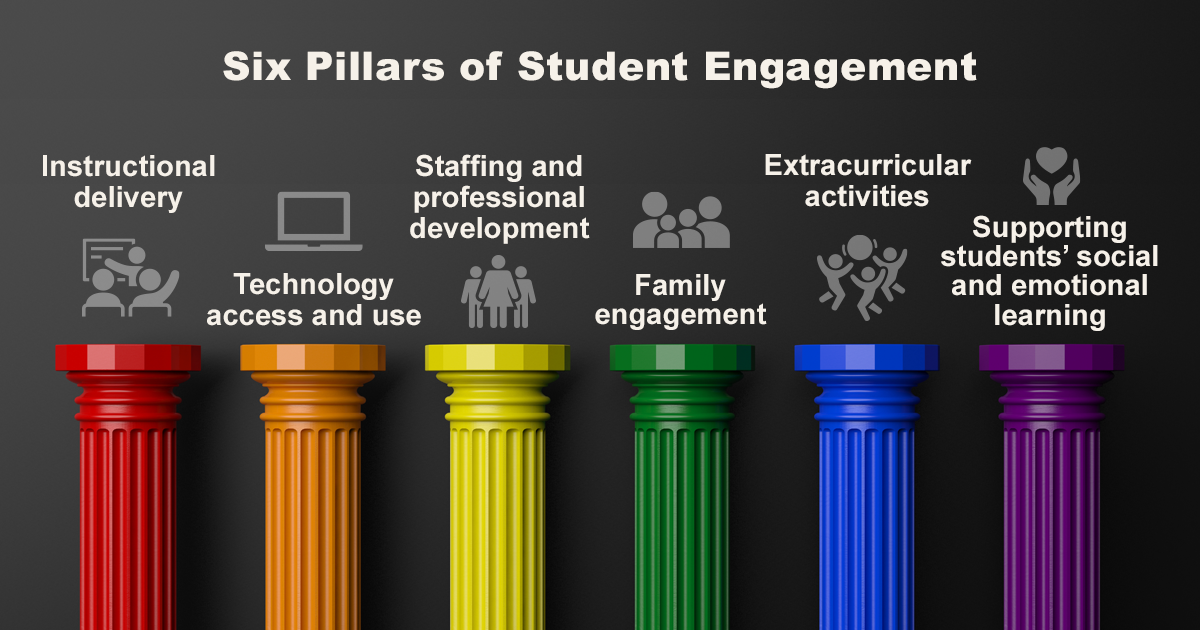
With most schools moving to fully or partially remote instruction during the COVID-19 pandemic, educators, schools, and districts have found innovative ways to engage students. Some of the approaches to student engagement that showed promise for remote instruction are likely to remain useful even when school buildings are fully open for in-person instruction.
In partnership with the New Jersey Department of Education, REL Mid-Atlantic sought to identify strategies that showed promise in remote and hybrid contexts and that could still have value after the pandemic is over.1 We reviewed the research, interviewed a small number of district and state staff, and examined education-focused publications for practices from other districts or states. From this work, we identified six factors for supporting student engagement in remote learning and give examples of how to extend these factors into in-person learning:
Instructional delivery
- Educators can integrate technology that students and teachers learned how to use during the pandemic into daily instruction. For example, incorporate computer-based activities more frequently into in-person lessons.
- Educators can develop clear connections between synchronous and asynchronous learning activities. For example, start classroom periods by highlighting exceptional work or correcting common mistakes from homework.
- Local education agency (LEA) and school leaders can allow students access to a wider range of advanced and elective courses online.
Technology access and use
- School leaders can support students, families, and teachers in using technology. For example, record and share videos to address common technical issues; spend professional development time getting teachers comfortable with technology.
- LEA leaders can delegate management of technology access and use to at least one district-level employee. This person would ensure students and families can access and use online tools.
Staffing and professional development
- LEA and school leaders can identify teachers’ needs for professional development and offer ample opportunities to address them. For example, conduct short surveys or focus groups to learn about these needs. Think creatively about how to meet them; for instance, provide an online library of professional development materials for teachers to review on their own schedule.
- LEA and school leaders can consider if any staffing models adopted during the pandemic were helpful and continue to use the ones that were. For example, use co-teaching models or offer Advanced Placement courses across schools.
Family engagement
- School leaders and educators can use multiple touchpoints consistently to inform and connect with families. For example, email families weekly with announcements and tips to support students, convene focus groups or town halls, or assign staff to call families to pass along important communications.
- LEA and school leaders can offer families the option to attend events virtually to increase participation. For example, provide virtual options for back-to-school night or parent–teacher conferences.
Extracurricular activities
- School leaders can encourage students and staff to propose innovative extracurricular offerings, building on instances in which students took the lead in online extracurriculars. For example, solicit ideas from students and support them with resources to bring the ideas to fruition, such as having clubs collaborate with one another to plan new events or activities.
Social and emotional learning
- Educators can create in-person or virtual safe spaces for students to share their perspectives and experiences. For example, assign a few students to a staff member who can check in on them individually and meet with them collectively; set aside time for students to participate in activities, such as celebrating birthdays or sharing music.
For more details and ideas, read the related infographic and watch the webinar we hosted on this topic.
Footnote
1 There is little rigorous evidence on how to engage students remotely. The promising strategies are mostly practices that educators perceived to be effective.
Cross-posted from the REL Mid-Atlantic website.



